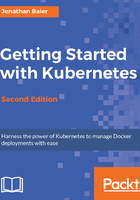
The advantages of Continuous Integration/Continuous Deployment
ThoughtWorks defines Continuous Integration as a development practice that requires developers to integrate code into a shared repository several times a day. By having a continuous process of building and deploying code, organizations are able to instill quality control and testing as part of the everyday work cycle. The result is that updates and bug fixes happen much faster and the overall quality improves.
However, there has always been a challenge in creating development environments that match that of testing and production. Often inconsistencies in these environments make it difficult to gain the full advantage of continuous delivery.
Using Docker, developers are now able to have truly portable deployments. Containers that are deployed on a developer's laptop are easily deployed on an in-house staging server. They are then easily transferred to the production server running in the cloud. This is because Docker builds containers up with build files that specify parent layers. One advantage of this is that it becomes very easy to ensure OS, package, and application versions are the same across development, staging, and production environments.
Because all the dependencies are packaged into the layer, the same host server can have multiple containers running a variety of OS or package versions. Further, we can have various languages and frameworks on the same host server without the typical dependency clashes we would get in a virtual machine (VM) with a single operating system.